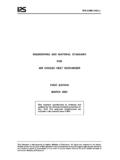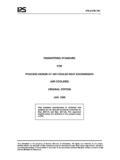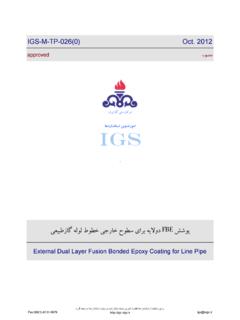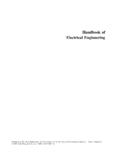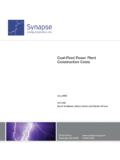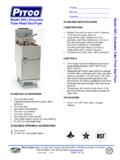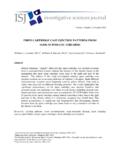Transcription of ENGINEERING AND MATERIAL STANDARD FOR …
1 IPS-G-ME-200(1). ENGINEERING AND MATERIAL STANDARD . FOR. fired heaters . FIRST EDITION. MARCH 2003. This STANDARD specification is reviewed and updated by the relevant technical committee on Oct. 2015. The approved modifications are included in the present issue of IPS. This STANDARD is the property of Iranian Ministry of Petroleum. All rights are reserved to the owner. Neither whole nor any part of this document may be disclosed to any third party, reproduced, stored in any retrieval system or transmitted in any form or by any means without the prior written consent of the Iranian Ministry of Petroleum. March 2003 IPS-G-ME-200(1). FOREWORD. The Iranian Petroleum standards (IPS) reflect the views of the Iranian Ministry of Petroleum and are intended for use in the oil and gas production facilities, oil refineries, chemical and petrochemical plants, gas handling and processing installations and other such facilities.
2 IPS are based on internationally acceptable standards and include selections from the items stipulated in the referenced standards . They are also supplemented by additional requirements and/or modifications based on the experience acquired by the Iranian Petroleum Industry and the local market availability. The options which are not specified in the text of the standards are itemized in data sheet/s, so that, the user can select his appropriate preferences therein. The IPS standards are therefore expected to be sufficiently flexible so that the users can adapt these standards to their requirements. However, they may not cover every requirement of each project. For such cases, an addendum to IPS STANDARD shall be prepared by the user which elaborates the particular requirements of the user. This addendum together with the relevant IPS. shall form the job specification for the specific project or work.
3 The IPS is reviewed and up-dated approximately every five years. Each standards are subject to amendment or withdrawal, if required, thus the latest edition of IPS shall be applicable The users of IPS are therefore requested to send their views and comments, including any addendum prepared for particular cases to the following address. These comments and recommendations will be reviewed by the relevant technical committee and in case of approval will be incorporated in the next revision of the STANDARD . standards and Research department , Street14, North kheradmand Karimkhan Avenue, Tehran, Iran . Postal Code- 1585886851. Tel: 88810459-60 & 66153055. Fax: 88810462. Email: standards @ 1. March 2003 IPS-G-ME-200(1). GENERAL DEFINITIONS. Throughout this STANDARD the following definitions shall apply. COMPAN: Refers to one of the related and/or affiliated companies of the Iranian Ministry of Petroleum such as National Iranian Oil Company, National Iranian Gas Company, National Petrochemical Company and National Iranian Oil Refinery And Distribution Company.
4 PURCHASER: Means the Company where this STANDARD is a part of direct purchaser order by the Company , and the Contractor where this STANDARD is a part of contract document. VENDOR AND SUPPLIER: Refers to firm or person who will supply and/or fabricate the equipment or MATERIAL . CONTRACTOR: Refers to the persons, firm or company whose tender has been accepted by the company. EXECUTOR: Executor is the party which carries out all or part of construction and/or commissioning for the project. INSPECTOR: The Inspector referred to in this STANDARD is a person/persons or a body appointed in writing by the company for the inspection of fabrication and installation work. SHALL: Is used where a provision is mandatory. SHOULD: Is used where a provision is advisory only. WILL: Is normally used in connection with the action by the Company rather than by a contractor, supplier or vendor. MAY: Is used where a provision is completely discretionary.
5 2. March 2003 IPS-G-ME-200(1). CONTENTS: PAGE No. 0. INTRODUCTION .. 4. 1. SCOPE .. 5. 6. DESIGN CONSIDERATIONS .. 5. 7. TUBES .. 7. 8. HEADERS .. 8. 9. PIPING, TERMINALS AND MANIFOLDS .. 8. 10. TUBE SUPPORTS .. 9. 11. REFRACTORIES AND INSULATION .. 10. 12. STRUCTURES AND APPURTENANCES .. 12. 13. STACKS, DUCTS, AND BREECHING .. 13. 14. BURNERS AND AUXILIARY EQUIPMENT .. 14. 11. CENTRIFUGAL FANS AND DRIVERS FOR fired HEATER SYSTEMS .. 24. 15. INSTRUMENT AND AUXILIARY CONNECTIONS .. 15. 16. SHOP FABRICATION AND FIELD ERECTION .. 16. 14. INSPECTION, EXAMINATION, AND TESTING .. 18. 15. GUARANTEES .. 19. ANNEXES: ANNEX B PURCHASER'S CHECKLIST .. 20. 3. March 2003 IPS-G-ME-200(1). 0. INTRODUCTION. This STANDARD specification gives the amendments and supplements to API STANDARD 560, Fourth Edition, August 2007. " fired heaters , for General Refinery Services". It is intended that API STANDARD together with this STANDARD shall be used for fired heater equipment for use in oil refineries, chemical plants, gas plants and where applicable, in exploration and production and new ventures.
6 For ease of reference, the clause or section numbering of API STANDARD 560 has been used throughout this STANDARD . Clauses in API STANDARD 560 not mentioned remain unaltered. NOTE: This First (1) edition dated march 2003, which is a new revision of the "IPS-G-ME-200" with the same title and number, cancels and replaces the original (0) edition dated Guidance for Use of this STANDARD . The following annotations, as specified hereunder, have been used at the bottom right hand side of each clause or paragraph to indicate the type of change made to the equivalent clause or paragraph of reference standards . Sub. (Substitution) : The API STANDARD clause is deleted and replaced by a new clause. Del. (Deletion) : The API STANDARD clause is deleted without any replacement. Add. (Addition) : A new clause with a new number is added. Mod. (Modification) : Part of the API STANDARD clause is modified, and/or a new Description and/or condition are added to that.
7 4. March 2003 IPS-G-ME-200(1). 1. SCOPE. The requirements outlined herein are supplementary to the data listed on the fired heater data sheet. (Mod.). Note: This STANDARD specification is reviewed and updated by the relevant technical committee on Oct. 2015. The approved modifications by were sent to IPS users as amendment No. 1. by circular No. 462 on Oct. 2015. These modifications are included in the present issue of IPS. 2. REFERENCES. Throughout this STANDARD the following dated and undated standards /codes are referred to. These referenced documents shall, to the extent specified herein, form a part of this STANDARD . For dated references, the edition cited applies. The applicability of changes in dated references that occur after the cited date shall be mutually agreed upon by the Company and the Vendor. For undated references, the latest edition of the referenced documents (including any supplements and amendments) applies.
8 (Mod.). ANSI (AMERICAN NATIONAL standards INSTITUTES). "Safety Requirements for workplace Walking/Working Surfaces and Their Access; Workplace, Floor, Wall and Roof Openings; Stairs and Guardrails Systems". "Ladders Fixed Safety Requirements". API (AMERICAN PETROLEUM INSTITUTE). API STD 530 "Calculation Heater - Tube Thickness in Petroleum Refineries ** Iso Adoption from ISO 13704-2007. **". ASME (AMERICAN SOCIETY OF MECHANICAL ENGINEERS). ASME "Pipe Flanges and Flanged Fittings". IPS (IRANIAN PETROLEUM standards ). IPS-E-GN-100 " ENGINEERING STANDARD for Units". IPS-E-TP-100 " ENGINEERING STANDARD for Paints". Units International System of Units (SI), in accordance with IPS-E-GN-100 shall be used, except where otherwise specified. (Add.). 6. DESIGN CONSIDERATIONS. Process Design heaters shall be designed for uniform heat distribution. Multipass heaters shall be designed for hydraulic and thermal symmetry, and uniform pressure drop per pass.
9 (Mod.). The average radiant heat flux specified on the data sheets is defined as the quotient of total heat absorbed by the radiant tubes divided by the total outside circumferential tube area inside the 5. March 2003 IPS-G-ME-200(1). firebox, including any fitting inside the firebox. The rows of convection tubes exposed to direct radiation shall be considered as being in the radiant section and the maximum radiant heat absorption rate shall apply to these tubes, irrespective of whether extended surface elements are used or not. (Sub.). The maximum radiant heat flux density is defined as the maximum heat rate to any portion of any radiant tube. The rate shall be calculated for the front 60 of the tube surface. This density is not to be considered as an operating average flux density for any given length of tube surface. (Add.). Process design conditions are shown on the individual fired Heater Data Sheet.
10 (Add.). Combustion Design Calculated and guaranteed efficiencies shall be based on design duty, fuel lower heating value (LHV), calculated heat losses, and the following percentages of excess air. (Mod.). TYPE OF FUEL. TYPE OF OPERATION GAS OIL OR GAS/OIL COMB. Natural draft 20% 30%. Forced draft 15% 20%. Volumetric heat release of the radiant section with natural draft burner shall not exceed 120,000 Kcal/hr/m for oil firing and 150,000 Kcal/hr/m for gas firing, at maximum heat release of furnace. (Mod.). Under all operating conditions, the outside surface temperature of the metal wall of the heated coils shall be at least 150 C, to prevent "dew point" corrosion by sulphuric acid condensing form the flue gases, if sulphur-containing fuels are fired . (Add.). Vendor shall specify the amount of excess air and stack temperature when operating at the guaranteed efficiency. (Add.). Mechanical Design Radiant heating section tubes shall be single row and minimum center to center distance of adjacent tubes shall be two nominal pipe diameters.
